Six Indian artists reframe the ladies compartment of a Mumbai local train
An exhibition by Method (India) at Galerie Melike Bilir in Hamburg explores a gendered space
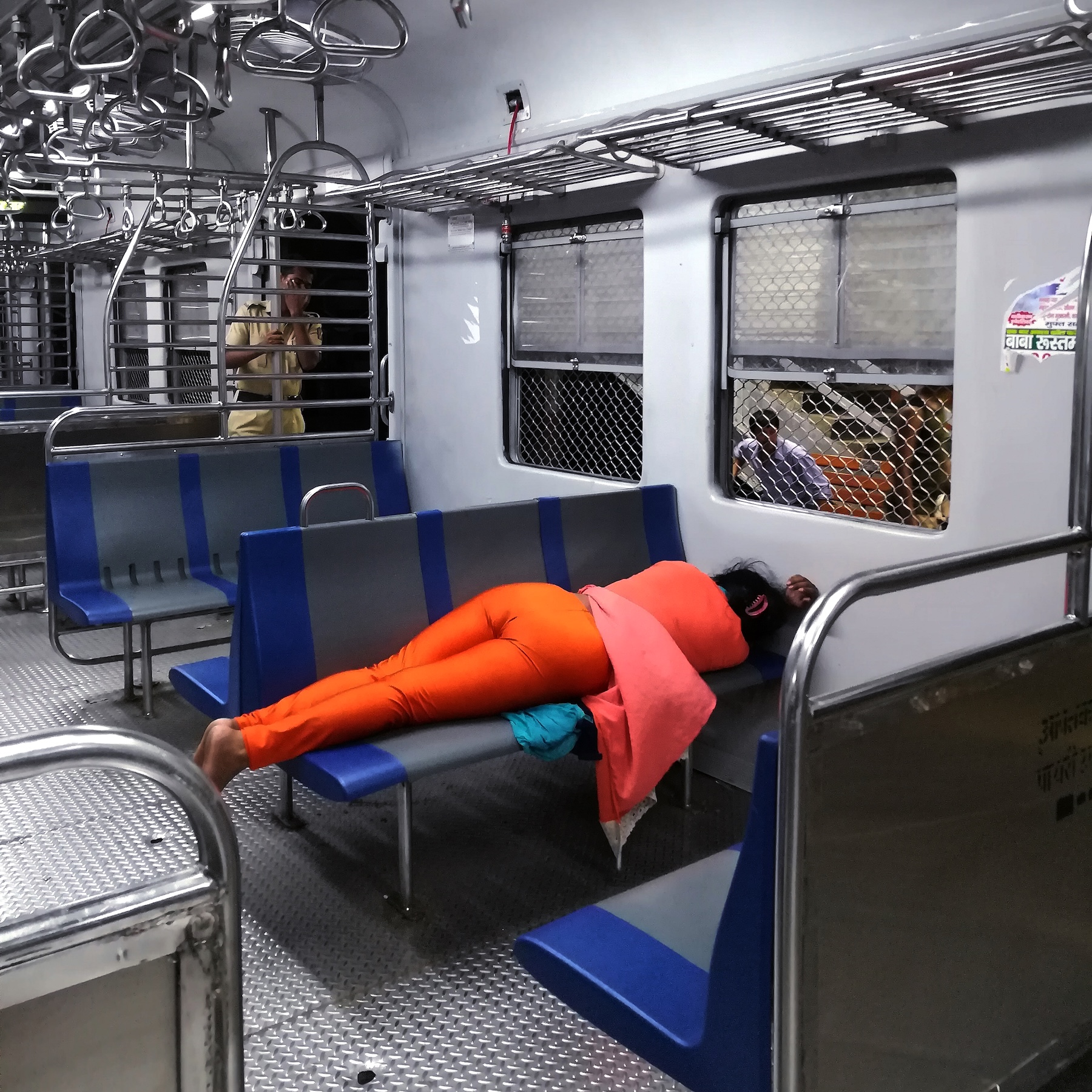
In the morning hours of any weekday, the ladies compartment of a Mumbai local train becomes a theatre of choreographed intimacy. A woman rests her head against the window while peeling an orange. Another combs her freshly washed hair and lines her eyes with kohl. Conversations hum beneath the screech of tracks. No names are exchanged, but a kind of collective muscle memory takes over – a choreography of co‑presence, cultivated over decades.
It’s in this quiet, functional familiarity that Ladies Compartment, an exhibition by Method (India) now showing at Galerie Melike Bilir in Hamburg, finds its point of departure. Featuring six Indian women artists, the show transforms a hyperlocal gendered space into a global meditation on containment, mobility, and the architectures of resilience. The artists – Anushree Fadnavis, Avani Rai, Darshika Singh, Keerthana Kunnath, Krithika Sriram, and Shaheen Peer – present work across photography, pigment, video, and self-portraiture, refracting the train compartment into a broader lens on space and identity.
The exhibition coincides with India Week Hamburg 2025, and marks Method’s debut in Germany. Curator and gallery founder Sahil Arora notes that the idea of gender-segregated transit compartments was 'very foreign to German/European audiences' – but not the experience of contested safety.
While titled after a space of separation, the show resists the voyeuristic impulse often associated with women-only exhibitions. What might seem to imply confinement as a means of care and control is actually a study in what is negotiated when the body is bracketed by both but governed by neither.
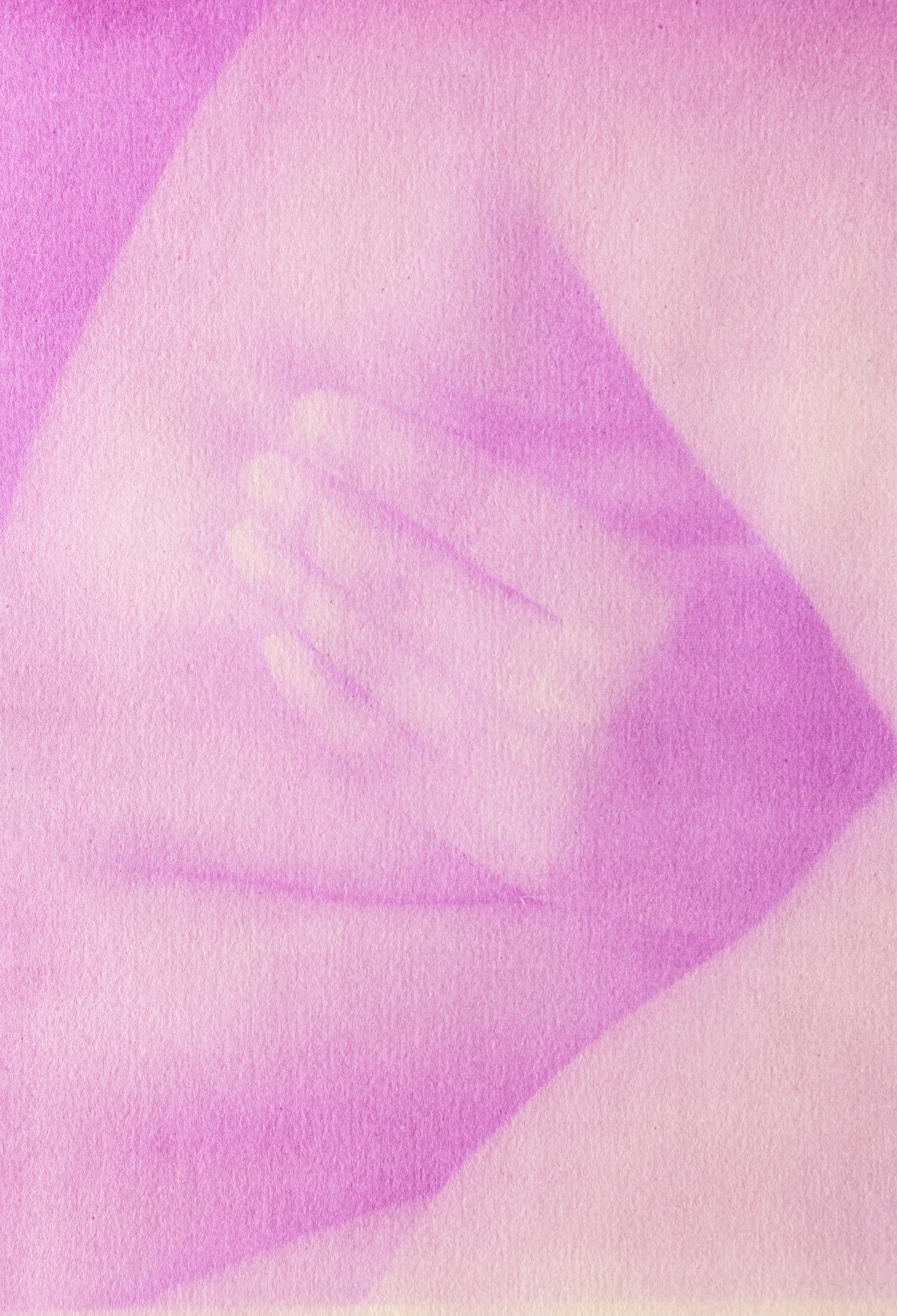
Rose petal pigment is used by Krithika Sriram in Kuvalai Anthotypes, to create self-portraits which fade. By creating works that disappear, Sriram adds memory into the mix of the every day
Darshika Singh’s video piece In A Single Thought is constructed around repetition, bringing to focus what is missed in its expected monotony. Using rhythm, gesture, and spatial constraint, she mines what she calls the 'unconscious imprint' of daily motion, repetition becomes rupture. 'Society’s expectation of productivity in women has a lot to do with how women’s labour is invisibilised,' she says. 'But repetition can be re-examined in a way that destroys order while others propagate it.' Singh’s formal restraint makes a case for small gestures as metaphysical insurgency.
Elsewhere, Krithika Sriram’s Kuvalai Anthotypes use rose petal pigment to produce self-portraits that literally fade over time. In a visual culture that often depicts Dalit life only through trauma or statistics, these images refuse spectacle, using disappearance as a narrative tool to challenge what bodies society considers worth archiving, memorising, and memorialising. 'This is an intentional departure from gore,' Sriram says. 'It comes from someone looking at their own history with agency.' The beauty in the work is with deep intent, not an aesthetic trick, just like the choice of pigment which comes from a flower that Dalit women were forbidden to touch.
In Shaheen Peer’s sculptural portraits, the face is omitted altogether. The body –shrouded in sarees, seated, mid-motion – becomes a site of reflection rather than recognition. 'Most of what we see today is concerned with who is in the photograph, not what it’s about,' Peer explains. 'Without the face, the viewer’s attention turns toward what I find more meaningful: memory, material, narrative and the interplay of colour, form, texture.' The absence of face redirects attention to movement, ritual, contact, reflection, making recognition obsolete.
Receive our daily digest of inspiration, escapism and design stories from around the world direct to your inbox.
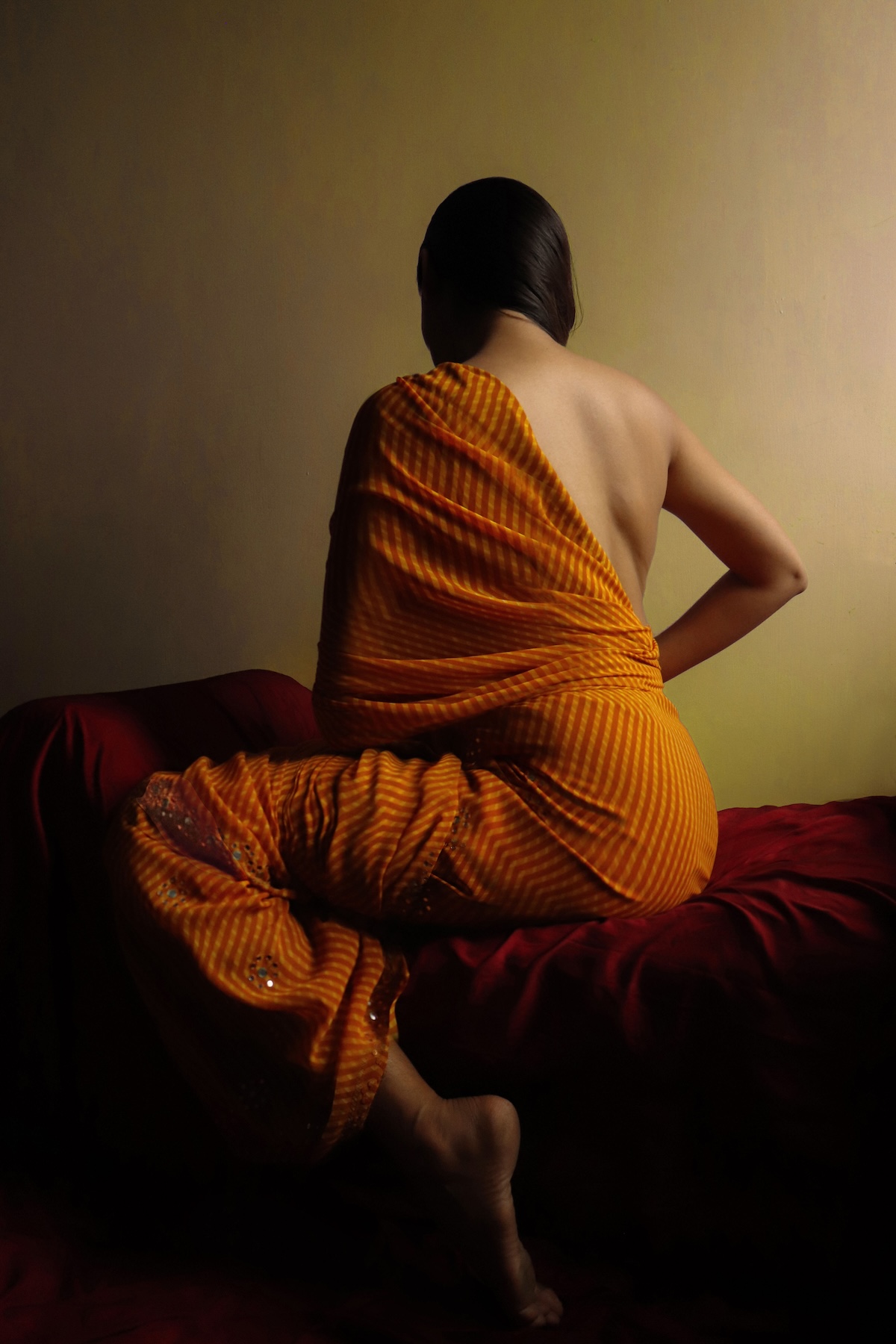
Shaheen Peer reacts against the half-glimpse reflected face synonymous with travel by omitting the face altogether
Together, the works push against the idea that visibility is always emancipatory. Fadnavis’s decade-long photo series #traindiaries documents the micro-kinships and solitary routines of the Mumbai local, treating everyday transit as a site of interiority. Rai’s Women of Gurdaspur captures the echo of ancestral loss and rural memory, turning the camera toward Punjab’s women without objectifying them. Kunnath’s bold portraits of Indian female bodybuilders confront the viewer with a muscular femininity that breaks both Western and postcolonial ideals of beauty. Her lens lingers not on performance, but on preparation: the discipline, exhaustion, and pride beneath the spectacle.
What binds the works is their refusal to perform for institutional comfort. Arora, who resists curatorial prescriptions, is clear: 'We’re not interested in a checklist of ‘shoulds’. Authenticity matters more than moral obligation.' He also foregrounds a systemic disparity: 'In our last open call, only 35% of applicants were women. The skew starts at art school. If fewer women apply, fewer get shown.' The result, he says, is that even well-intentioned attempts at equity risk become tokenistic if not accompanied by deeper structural shifts.
That tension – between visibility and tokenism, inclusion and autonomy – sits at the core of Ladies Compartment. And it raises uncomfortable questions: What does it mean to be invited to speak? Who defines the frame in which you are allowed to appear?
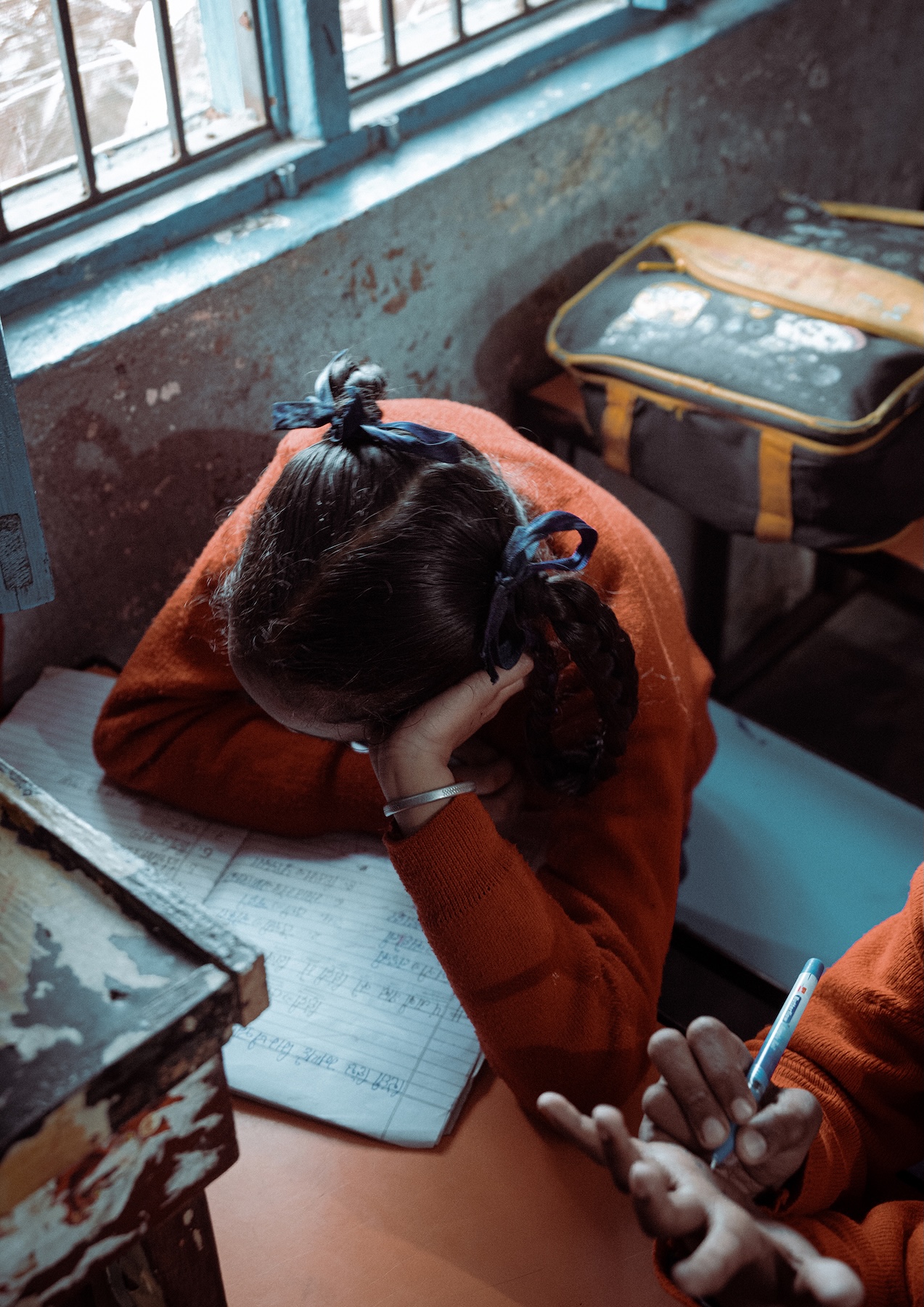
Avani Rai considers the implications of containment in travel in Panna
By partnering with Galerie Melike Bilir, known for centering female and experimental voices, Method sidesteps the optics of cultural diplomacy in favour of a deeper alignment. 'Nobody can ever ensure how work is received,' Arora admits. 'But you can work with people whose intentions echo your own.'
In the end, Ladies Compartment is not about the compartment at all. It’s about what happens inside it – the breath between gestures, the architectures of care and surveillance, the choreography of belonging on borrowed land. Neither is it a show simply about Indian women. It is a spatial proposition: What if the act of making space – on a train, in a gallery, in the archive – is itself a form of resistance?
It is, quite literally, a show in transit.
Aastha D. (she/they) is an independent scholar, essayist, and educator. They have degrees in architecture and its critical, curatorial, and conceptual practices. She founded the magazine Proseterity, and is also managing editor of the working group Insurgent Domesticities at the Center for the Study of Social Difference (CSSD) of Columbia University
-
 The best Miami hotels to book for design-minded travellers
The best Miami hotels to book for design-minded travellersIn town for Art Basel or Design Miami? These are the city’s most stylish stays, whether you’re looking to hit the beach or have a spa day
-
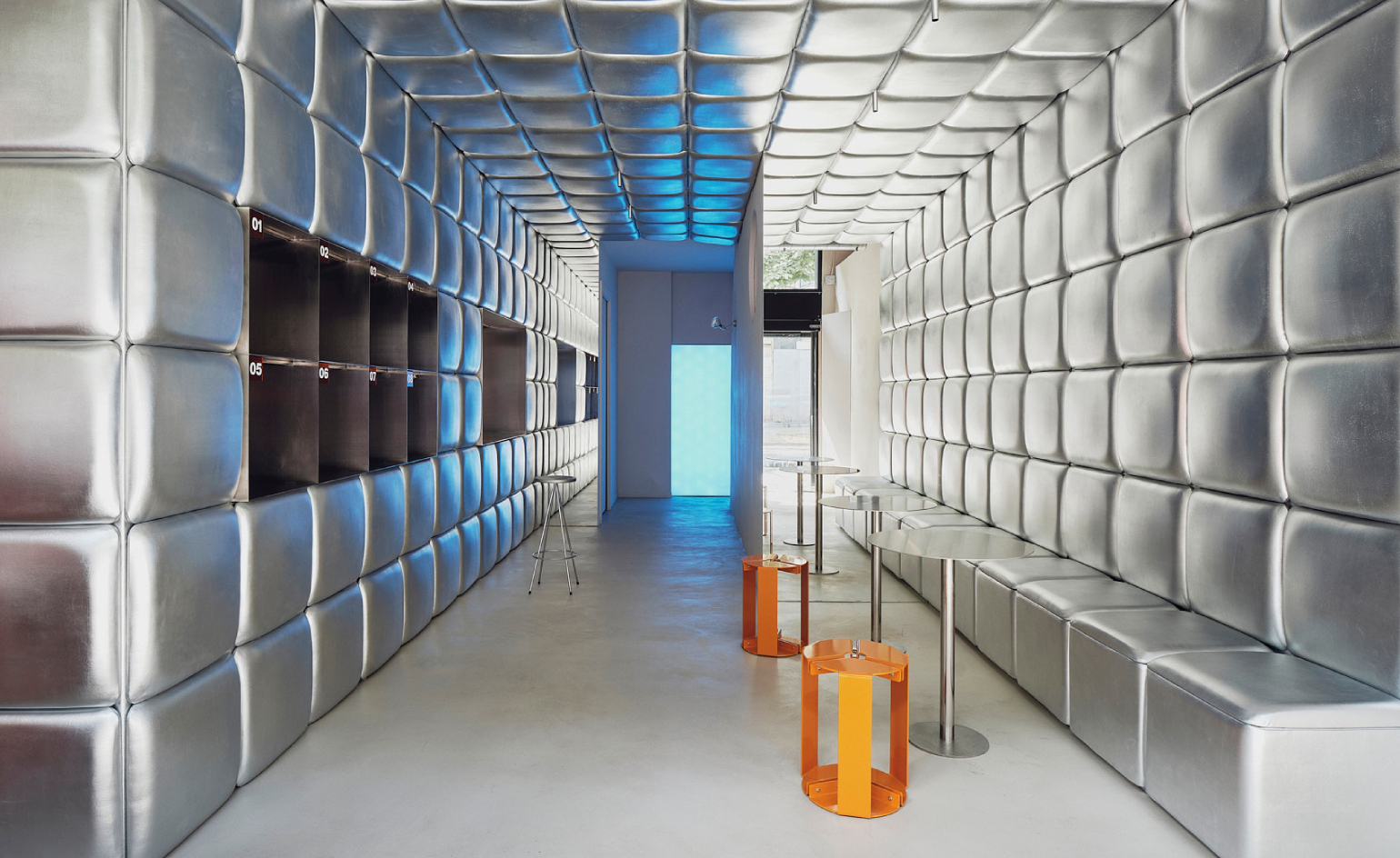 Enter a metallic, maximalist playground for pasta lovers in Barcelona
Enter a metallic, maximalist playground for pasta lovers in BarcelonaRelleno’s first flagship restaurant pushes casual dining into a chrome-lined future, wrapping guests in a sculptural grid that riffs on the geometry of filled pasta
-
 This Alpine chalet rejects the ‘modern ski’ aesthetic to embrace art deco
This Alpine chalet rejects the ‘modern ski’ aesthetic to embrace art decoOriginally designed by architect Henry Jacques Le Même, a key figure in shaping the Alpine style, Le Sarto in Megève, France, has been captivatingly transformed by interior architecture studio Claves